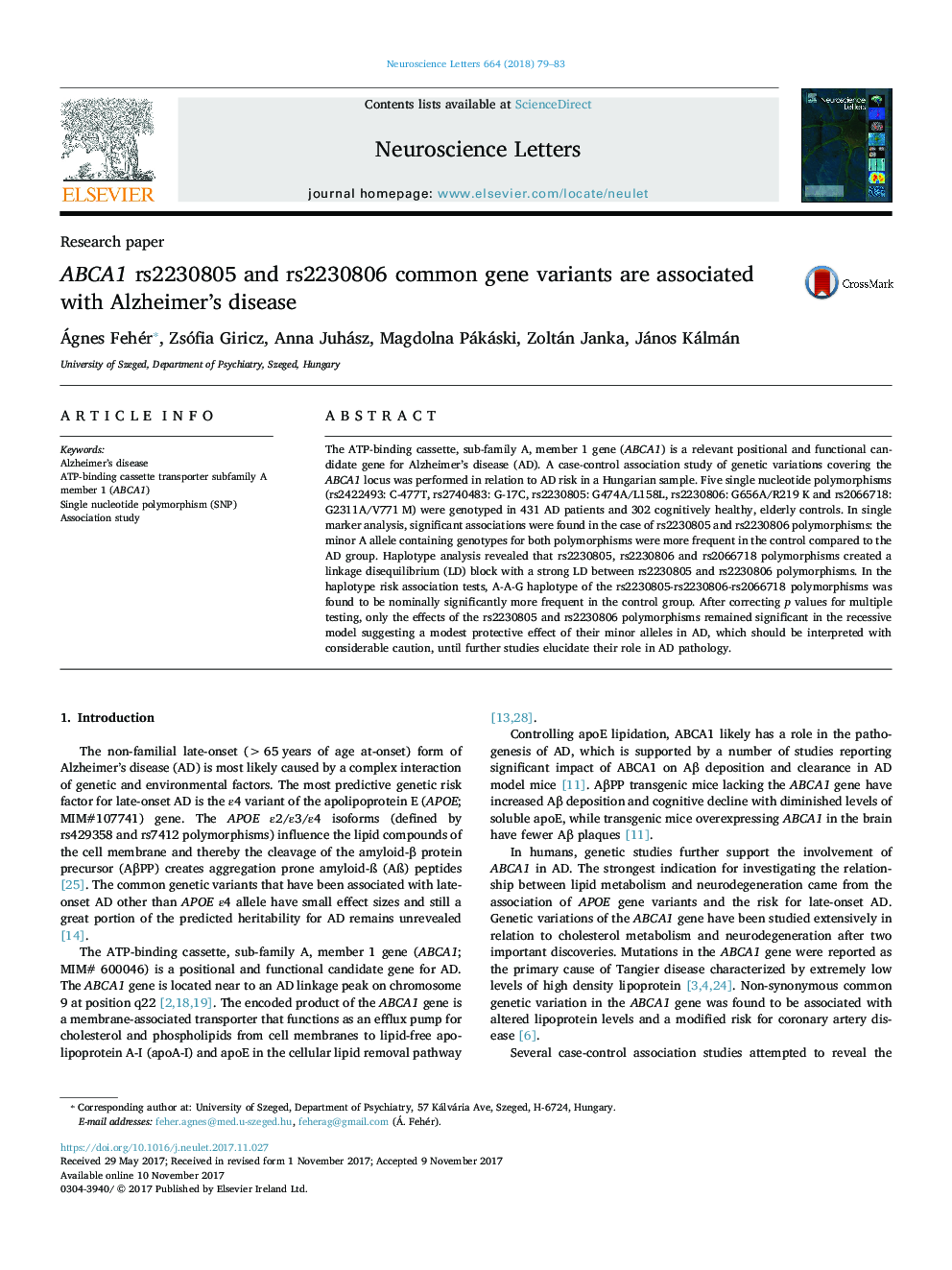| Article ID | Journal | Published Year | Pages | File Type |
|---|---|---|---|---|
| 8841922 | Neuroscience Letters | 2018 | 5 Pages |
Abstract
The ATP-binding cassette, sub-family A, member 1 gene (ABCA1) is a relevant positional and functional candidate gene for Alzheimer's disease (AD). A case-control association study of genetic variations covering the ABCA1 locus was performed in relation to AD risk in a Hungarian sample. Five single nucleotide polymorphisms (rs2422493: C-477T, rs2740483: G-17C, rs2230805: G474A/L158L, rs2230806: G656A/R219Â K and rs2066718: G2311A/V771Â M) were genotyped in 431 AD patients and 302 cognitively healthy, elderly controls. In single marker analysis, significant associations were found in the case of rs2230805 and rs2230806 polymorphisms: the minor A allele containing genotypes for both polymorphisms were more frequent in the control compared to the AD group. Haplotype analysis revealed that rs2230805, rs2230806 and rs2066718 polymorphisms created a linkage disequilibrium (LD) block with a strong LD between rs2230805 and rs2230806 polymorphisms. In the haplotype risk association tests, A-A-G haplotype of the rs2230805-rs2230806-rs2066718 polymorphisms was found to be nominally significantly more frequent in the control group. After correcting p values for multiple testing, only the effects of the rs2230805 and rs2230806 polymorphisms remained significant in the recessive model suggesting a modest protective effect of their minor alleles in AD, which should be interpreted with considerable caution, until further studies elucidate their role in AD pathology.
Related Topics
Life Sciences
Neuroscience
Neuroscience (General)
Authors
Ágnes Fehér, Zsófia Giricz, Anna Juhász, Magdolna Pákáski, Zoltán Janka, János Kálmán,
